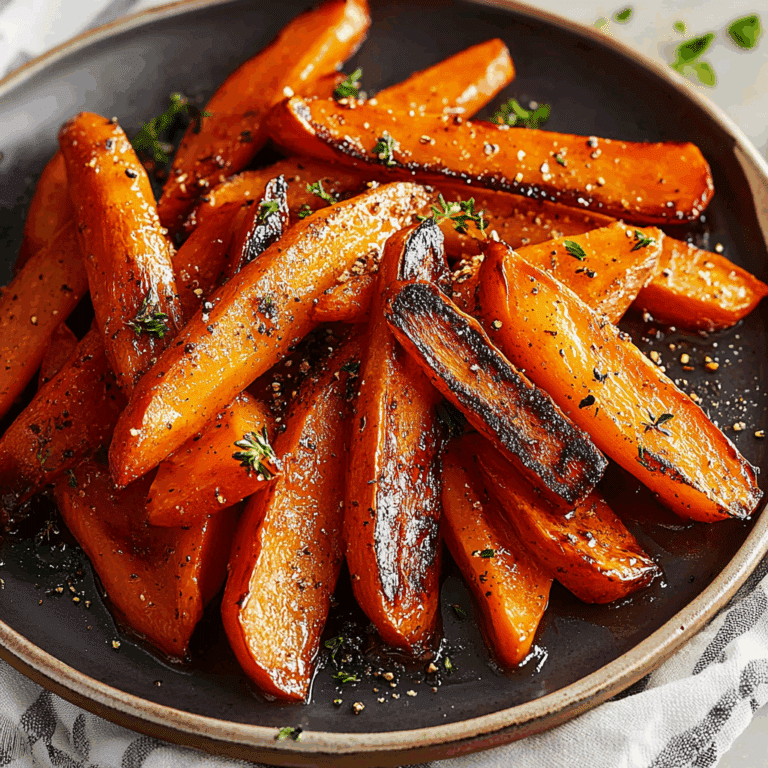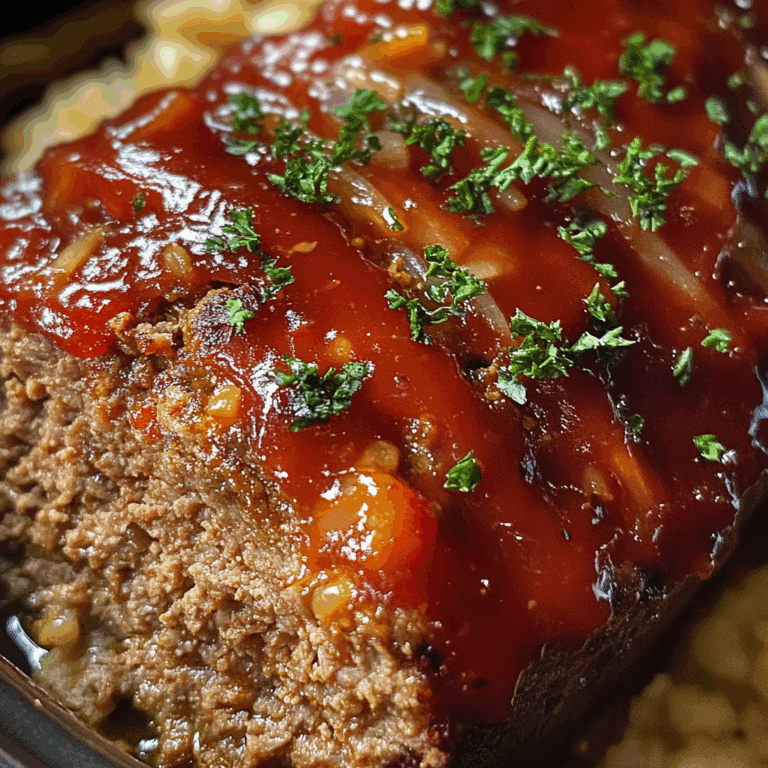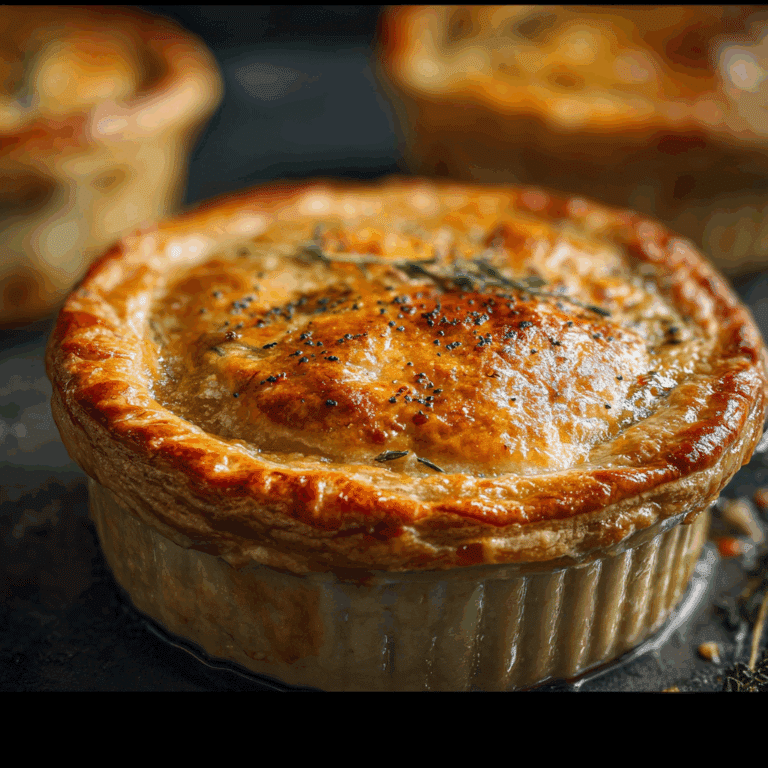How to Make Perfect Coq au Vin Easily
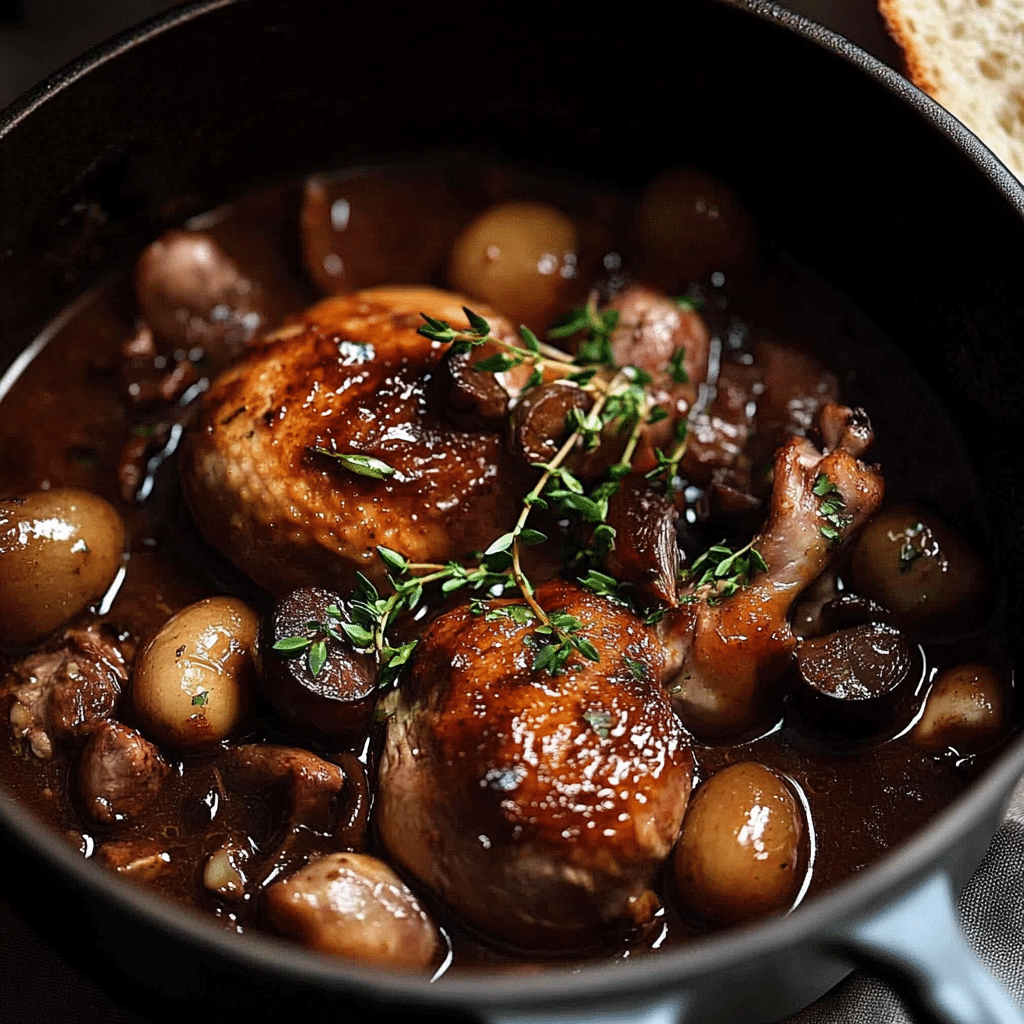
If you’re craving a dish that brings together rich, comforting flavors with a rustic French elegance, then learning how to make perfect Coq au Vin easily is definitely the way to go. This classic French stew, featuring tender chicken slowly cooked in red wine with mushrooms, onions, and bacon, creates a symphony of tastes that warm your soul and impress any guest. Whether you’re preparing a cozy dinner or a special meal, this recipe breaks down every step, making Coq au Vin accessible and absolutely delicious.
Why You’ll Love This Recipe
- Rich and Comforting: The slow braise in wine infuses the chicken with deep, savory flavors that feel like a warm hug on a plate.
- Impressively Simple: Despite its gourmet reputation, Coq au Vin uses straightforward techniques anyone can master.
- Versatile and Adaptable: This recipe lends itself well to ingredient swaps or dietary tweaks without losing its essence.
- Perfect for Gatherings: The hearty portions and crowd-pleasing taste make it ideal for family dinners or entertaining guests.
- Enhanced by Pantry Staples: Many ingredients are common items, making Coq au Vin an accessible dish to whip up anytime.
Ingredients You’ll Need
The beauty of Coq au Vin lies not only in its flavors but also in how simple yet essential each ingredient is. Every component plays a role—from the wine that tenderizes and flavors the meat to the mushrooms and bacon that add earthiness and depth. Here’s what you’ll need to get started:
- Chicken Pieces: Bone-in, skin-on chicken thighs or legs retain moisture and absorb flavors beautifully.
- Red Wine: A dry red like Burgundy or Pinot Noir works best for that classic French touch.
- Bacon or Pancetta: Adds smoky, salty richness that layers into the sauce.
- Button Mushrooms: Their earthy taste complements the wine and chicken harmoniously.
- Pearl Onions: Sweet little bursts that balance savory flavors perfectly.
- Garlic and Fresh Herbs: Essential aromatics like thyme, bay leaves, and parsley bring freshness and complexity.
- Chicken Broth: Enhances the sauce’s body without overpowering the wine’s character.
- Butter and Olive Oil: For searing and enriching the sauce’s texture.
- Flour: A small amount to gently thicken the sauce and bind the flavors.
- Salt and Pepper: Simple seasoning to bring out the natural components.
Variations for Coq au Vin
Part of the fun with Coq au Vin is making it your own. Whether you’re accommodating dietary needs or experimenting with new flavors, this classic is surprisingly flexible and forgiving.
- White Wine Version: Use a dry white wine like Chardonnay for a lighter, brighter variation.
- Mushroom Medley: Swap button mushrooms with cremini or shiitake for more depth.
- Vegetarian Twist: Replace chicken with hearty vegetables like cauliflower or eggplant and use vegetable stock.
- Spicy Kick: Add a pinch of red pepper flakes or smoked paprika to give the dish a subtle heat.
- Herb Swaps: Try rosemary or tarragon instead of thyme for a different herbaceous profile.

How to Make Coq au Vin
Step 1: Prep the Chicken
Pat the chicken pieces dry and season with salt and pepper to ensure a crispy, flavorful skin when browned. This step sets the foundation for your delicious Coq au Vin.
Step 2: Cook the Bacon and Aromatics
In a heavy-bottomed pot or Dutch oven, cook the chopped bacon over medium heat until crispy. Remove the bacon but keep the rendered fat. Sauté pearl onions, garlic, and mushrooms in this flavorful fat until they start to soften and brown.
Step 3: Brown the Chicken
Add tablespoons of butter and olive oil to the pot, then brown the chicken pieces on all sides over medium-high heat. This caramelization locks in moisture and adds depth to the final dish.
Step 4: Deglaze with Wine
Pour in the red wine, scraping up any browned bits from the pot bottom — these bits are flavor gold! This process ensures every element melds beautifully into the sauce.
Step 5: Add Broth and Herbs
Return bacon and vegetables to the pot, then add chicken broth, thyme, bay leaves, and seasonings. Bring to a simmer, cover, and gently cook on low heat until the chicken is tender and infused with those luscious wine flavors—often about an hour.
Step 6: Thicken the Sauce
Mix flour with a little water to create a slurry, then stir it into the simmering sauce to thicken it just before serving. This step gives the sauce a silky texture that clings lovingly to the chicken.
Pro Tips for Making Coq au Vin
- Choose Quality Wine: Using a wine you’d enjoy drinking ensures the best flavor in your dish.
- Don’t Rush Browning: Taking time to brown the chicken properly adds essential flavor depth.
- Simmer Low and Slow: Gentle heat lets the flavors meld perfectly without drying the chicken.
- Use Fresh Herbs: Fresh thyme and parsley brighten the rich sauce in the final stages.
- Peel Pearl Onions Easily: Blanch onions in boiling water briefly to loosen skins for quick peeling.
How to Serve Coq au Vin
Garnishes
A sprinkle of freshly chopped parsley or a few thyme sprigs add fresh color and a burst of herbal aroma, elevating Coq au Vin’s presentation and flavor.
Side Dishes
Serve alongside creamy mashed potatoes, buttered egg noodles, or crusty baguette slices to soak up every bit of the luscious wine sauce.
Creative Ways to Present
Plate the chicken with a spoonful of mushrooms and onions on top, drizzle with sauce, and add a small bundle of fresh herbs tied with twine for an elegant rustic touch that delights guests.
Make Ahead and Storage
Storing Leftovers
Coq au Vin tastes even better the next day! Store leftovers in an airtight container in the refrigerator for up to 3 days, allowing the flavors to deepen.
Freezing
Freeze portions in airtight containers or heavy-duty freezer bags for up to 3 months. Thaw overnight in the fridge before reheating gently.
Reheating
Warm Coq au Vin slowly on the stove over low heat or in the microwave at medium power to maintain tenderness and prevent drying out.
FAQs
Can I use chicken breasts instead of thighs?
While chicken breasts can be used, thighs or legs are preferred because they stay juicy during slow cooking and have richer flavor.
What type of wine works best for Coq au Vin?
Dry red wines like Pinot Noir or Burgundy are classic choices that complement the dish’s rich flavors without overpowering them.
Is it necessary to brown the chicken before cooking?
Yes, browning the chicken helps develop deeper flavor and improves texture by creating a delicious crust.
Can Coq au Vin be made in a slow cooker?
Absolutely! Brown ingredients first, then transfer everything to a slow cooker and cook on low for 4-6 hours for tender results.
How do I peel pearl onions quickly?
Blanch them briefly in boiling water, then plunge into ice water to loosen the skins for easy peeling.
Final Thoughts
Coq au Vin is truly one of those timeless dishes that brings comfort, elegance, and lots of joy to the table. With this easy-to-follow recipe, you can confidently create a memorable meal bursting with rich flavors without stress. So, grab a bottle of good red wine and start cooking—your perfect Coq au Vin awaits!
Print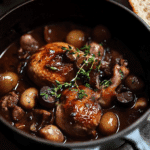
Coq au Vin
- Total Time: 1 hour 40 minutes
- Yield: 4-6 servings 1x
- Diet: Gluten Free
Description
Coq au Vin is a classic French stew featuring tender chicken slowly braised in dry red wine with mushrooms, pearl onions, and smoky bacon. This rich and comforting dish combines rustic elegance with homey flavors, perfect for cozy dinners or special gatherings. The recipe guides you step-by-step to create a luscious, deeply flavored meal that’s surprisingly simple to master.
Ingredients
Protein
- 6 bone-in, skin-on chicken thighs or legs
Liquids
- 2 cups dry red wine (Burgundy or Pinot Noir recommended)
- 1 cup chicken broth
Vegetables & Aromatics
- 12 oz button mushrooms, cleaned and trimmed
- 15 pearl onions, peeled
- 3 garlic cloves, minced
- 2 sprigs fresh thyme
- 2 bay leaves
- 2 tbsp fresh parsley, chopped (for garnish)
Meat & Fat
- 4 oz bacon or pancetta, chopped
- 2 tbsp unsalted butter
- 1 tbsp olive oil
Thickening & Seasoning
- 2 tbsp all-purpose flour
- Salt and freshly ground black pepper, to taste
Instructions
- Prep the Chicken: Pat the chicken pieces dry with paper towels and season generously with salt and pepper. This helps achieve a crispy, flavorful skin when browned.
- Cook the Bacon and Aromatics: In a heavy-bottomed pot or Dutch oven, cook the chopped bacon over medium heat until crisp. Remove the bacon and set aside, leaving the rendered fat in the pot. Add pearl onions, garlic, and mushrooms to the fat and sauté until they begin to soften and develop a light brown color.
- Brown the Chicken: Add butter and olive oil to the pot. Place the chicken pieces skin-side down and brown on all sides over medium-high heat. This caramelization locks in moisture and builds flavor.
- Deglaze with Wine: Pour in the red wine, scraping the bottom of the pot to release browned bits. These add depth and richness to the sauce.
- Add Broth and Herbs: Return the cooked bacon and sautéed vegetables to the pot. Add chicken broth, thyme sprigs, bay leaves, and adjust salt and pepper. Bring to a gentle simmer, cover, and cook on low heat for about 1 hour, or until the chicken is tender and infused with the wine flavors.
- Thicken the Sauce: Mix flour with a small amount of water to create a smooth slurry, then stir it into the simmering sauce. Cook for an additional 5-10 minutes until the sauce thickens to a silky, clingy consistency.
Notes
- Choose a quality dry red wine you enjoy drinking to ensure the best flavor.
- Take your time browning the chicken to develop rich flavors and crisp skin.
- Simmer the dish on low heat for the best melding of flavors without drying out the chicken.
- Use fresh thyme and parsley to brighten the sauce at the end.
- Peel pearl onions quickly by blanching them briefly in boiling water, then plunging into ice water.
- Leftovers improve in flavor overnight and can be stored in the refrigerator for up to 3 days or frozen for 3 months.
- Reheat gently to maintain tenderness and prevent drying.
- Prep Time: 20 minutes
- Cook Time: 1 hour 20 minutes
- Category: Main Course
- Method: Braised
- Cuisine: French
Nutrition
- Serving Size: 1 serving
- Calories: 450 kcal
- Sugar: 3 g
- Sodium: 600 mg
- Fat: 25 g
- Saturated Fat: 8 g
- Unsaturated Fat: 14 g
- Trans Fat: 0 g
- Carbohydrates: 10 g
- Fiber: 1 g
- Protein: 40 g
- Cholesterol: 130 mg
Keywords: Coq au Vin, French stew, braised chicken, red wine chicken, rustic French recipe, comfort food


